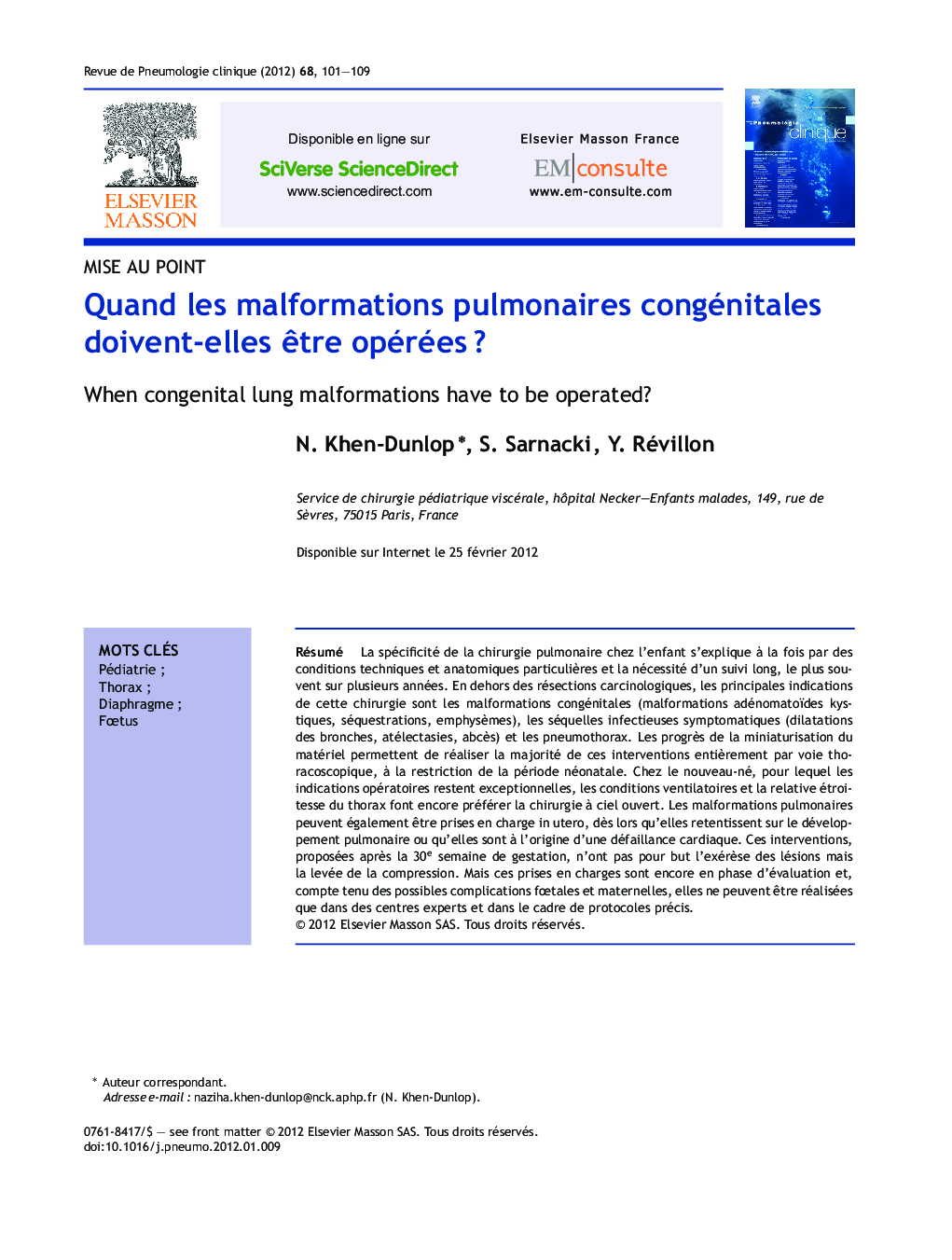| Article ID | Journal | Published Year | Pages | File Type |
|---|---|---|---|---|
| 3419482 | Revue de Pneumologie Clinique | 2012 | 9 Pages |
Abstract
Both technical and anatomical features and the need for a long follow-up, usually over several years, explain the specificity of lung surgery in children. Apart from the oncological resections, the main indications for this surgery are congenital lung anomalies (cystic adenomatoid malformation, bronchopulmonary sequestration, lobar emphysema), symptomatic postinfectious lesions (bronchiectasis, atelectasis, abscess) and pneumothorax. Advances in miniaturization of the surgical equipment are used to carry the majority of these interventions by thoracoscopy, except when performed at the neonatal period. In the newborn, for which the indications for lung surgical resections are exceptional, ventilatory conditions and the tightness of the chest lead to still prefer open surgery. Pulmonary malformations can also be managed prenatally when they affect lung development or cause heart failure because of compressive complications. These interventions, performed after the 30th week of gestation, are not intended to remove the lesions, but to release the compression. But these procedures are still under evaluation and, in light of possible fetal and maternal complications, they should only be performed in tertiary centers and in the context of specific protocols.
Related Topics
Health Sciences
Medicine and Dentistry
Infectious Diseases
Authors
N. Khen-Dunlop, S. Sarnacki, Y. Révillon,
